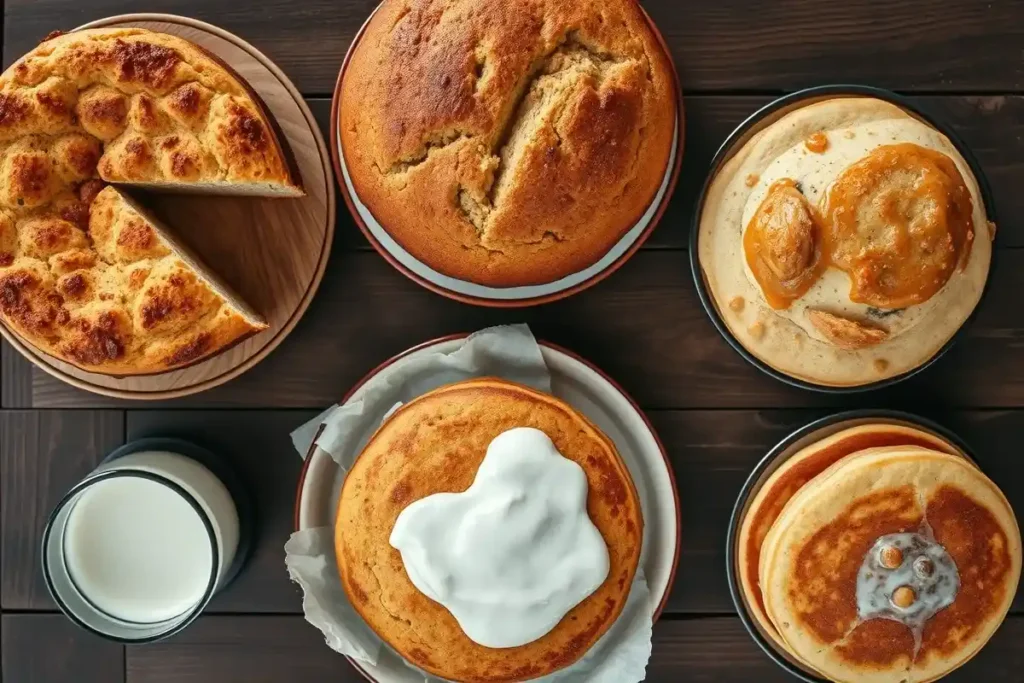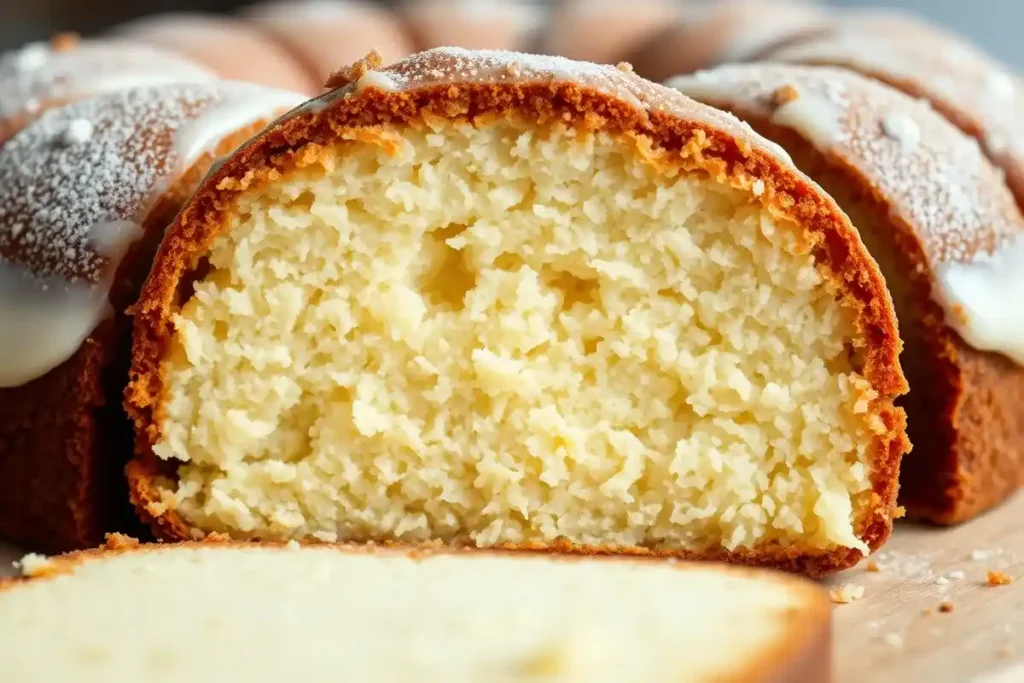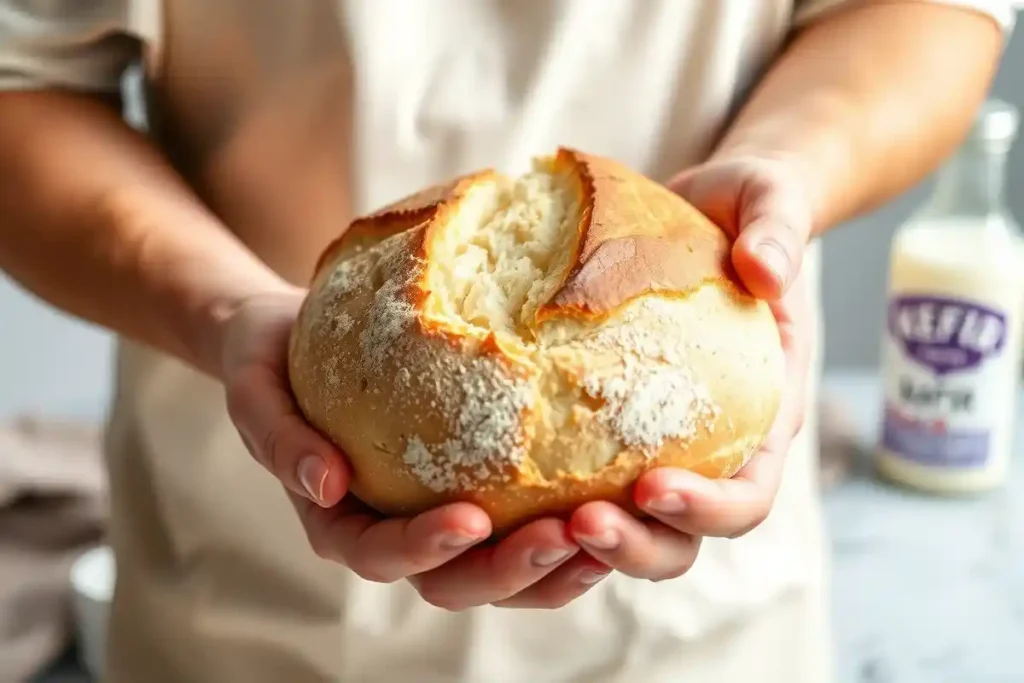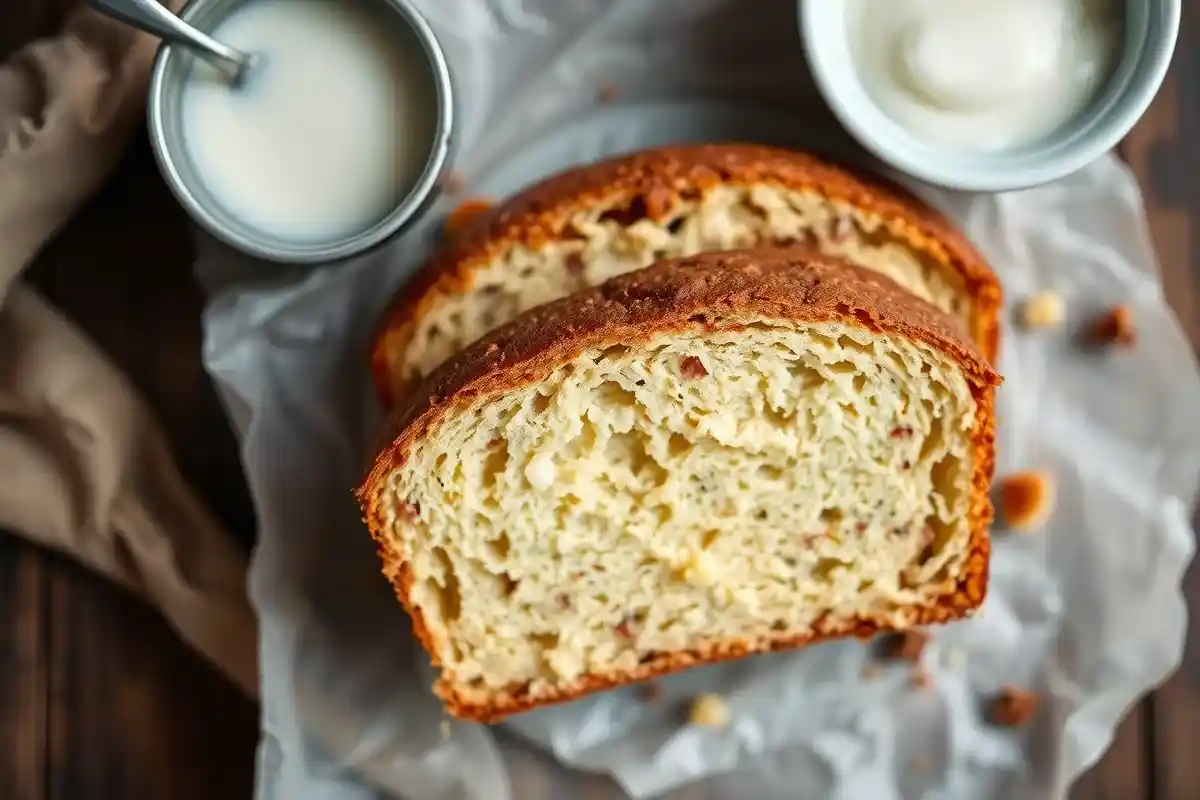This article explores what does kefir do in baking, highlighting its benefits for texture and flavor. Learn how to use kefir for creating moist and fluffy baked goods, using kefir baking techniques.
What Does Kefir Do in Baking? Understanding the Magic
Kefir, a fermented milk drink, offers unique advantages when used in baking. Therefore, understanding how kefir benefits baking can transform your recipes. Indeed, kefir can improve both the texture and flavor of baked goods.
Enhanced Texture: The Key Kefir Benefits in Baking
Kefir acts as a natural tenderizer. For instance, it breaks down gluten. Consequently, this results in softer baked goods. This tenderizing effect is crucial for achieving desirable textures. Moreover, the acids in kefir react with baking soda. Therefore, this creates a lighter, more airy crumb.
Improved Flavor: The Effects of Kefir in Baking
Kefir adds a slight tang. Specifically, this enhances the overall flavor profile. The fermentation process develops complex flavors. Thus, this results in a more interesting and delicious final product. Additionally, kefir‘s subtle sourness compliments sweetness in many baked items.
The Science Behind Using Kefir in Baked Goods
What does kefir do in baking is due to its lactic acid content. The acid interacts with proteins and starches. Consequently, this creates better moisture retention in baked goods. As a result, cakes, muffins, and breads stay fresh longer. Furthermore, the probiotic nature of kefir may offer some added health benefits.
How Kefir Baking Applications Transform Your Recipes
Kefir’s versatility makes it a valuable baking ingredient. Consequently, it can be used in a variety of recipes. Indeed, kefir for baking recipes range from simple cakes to complex breads.

Kefir in Cake Baking: Creating Moist and Fluffy Cakes
Kefir’s acidity tenderizes the gluten in cake batter. Therefore, the cakes become incredibly soft and moist. For example, try substituting some milk or buttermilk with kefir. Additionally, using kefir leads to a cake with a better crumb and texture.
Kefir in Bread Baking: A Boost for Loaves
In bread recipes, kefir enhances the gluten structure. It increases the dough’s elasticity. Hence, the bread achieves a better rise and a softer texture. Using kefir in bread makes the crumb more open. Furthermore, the subtle tang of kefir adds a delightful depth to the bread’s flavor. Consequently, the overall outcome is improved.
Kefir in Pancake Baking: Light and Fluffy Morning Treats
Kefir works exceptionally well in pancake batter. Specifically, it produces light, airy, and fluffy pancakes. The reaction of the acid with the leavening agents creates a beautiful rise. The tang from kefir also offers a unique flavor. Finally, your pancakes are more tasty.
Kefir in Muffin Baking: Adding Moisture and Flavor
Kefir helps create moist and tender muffins. The acidity of the kefir assists in achieving a good rise. Moreover, it adds a subtle tang that compliments the sweetness of muffins. Additionally, it helps in keeping the muffins moist longer. Thus, they stay fresh and delicious.
| Aspect | Benefits |
| Texture Improvement | Makes baked goods softer and more tender. Achieves a finer, more delicate crumb. |
| Moisture Retention | Helps cakes, muffins, and breads stay moist for longer. Prevents drying out. |
| Flavor Enhancement | Adds a subtle tangy taste that compliments sweet flavors. Gives a depth of flavor. |
| Leavening Agent | Reacts with baking soda to produce lighter and airy results. Adds a better rise. |
| Nutritional Boost | Offers added nutrients and probiotics. Can promote good digestive health. |
Kefir Baking Substitution: How to Replace Other Liquids
What does kefir do in baking also relates to its substitution abilities. Kefir can replace buttermilk, sour cream, or yogurt in many baking recipes. However, the level of acidity in kefir can vary. Therefore, some adjustments might be needed.
Replacing Buttermilk with Kefir
Kefir is an excellent substitute for buttermilk in baking. In fact, they have similar acidity levels. You can use kefir in a 1:1 ratio to replace buttermilk. Furthermore, the results will be comparable. Additionally, the flavor will also have a slight tang that is similar to buttermilk.
Replacing Yogurt with Kefir
Kefir can also be used instead of yogurt in baking. Although yogurt is thicker, kefir’s tang and acidity are compatible. You might need to adjust the liquid content. Therefore, add more or less flour, as needed, to achieve the right consistency.
Substituting Sour Cream with Kefir
While sour cream is much thicker, kefir can still act as a substitute. This is especially in recipes that benefit from tanginess. Consider using slightly less kefir than sour cream. Additionally, be mindful of the batter’s consistency. Thus, this ensures that it is correct for the recipe.
Kefir Baking Texture: Achieving the Perfect Consistency
Understanding kefir baking texture is vital for successful baking. The unique properties of kefir can improve the final result. Moreover, they also influence moisture levels and crumb structure.

Impact on Moisture: Kefir Baking Hydration
Kefir increases moisture in baked goods. Hence, items like cakes and muffins stay tender. Specifically, the lactic acid interacts with other components. This helps trap moisture inside. Therefore, it prevents them from drying out.
Crumb Structure: Kefir Baking Gluten
Kefir weakens the gluten structure. As a result, this makes the crumb finer and more delicate. The acids in kefir break down gluten proteins. Hence, creating softer textures and more tender bites. Indeed, this is why kefir is useful in baking.
Achieving Kefir Baking Dough Perfection
When using kefir in dough, observe its consistency. The goal is a dough that is manageable yet not too sticky. Adjust the flour as necessary. Furthermore, the hydration from kefir can affect the dough’s final texture.
Kefir Baking Flavor: Enhancing Your Baking
The kefir baking flavor is a great reason to include it in baking. Its unique taste contributes to the overall quality. The slightly tangy taste compliments sweet flavors. Thus, it adds a layer of complexity to baked items.
The Subtle Tang: Kefir Baking Acidity
Kefir’s acidity is key to its characteristic flavor profile. This tanginess offers a refreshing contrast to sweetness. Therefore, this makes baked goods more interesting. Indeed, this also allows for a more complex flavor profile overall.
Flavor Development in Kefir Baking Yeast
When kefir is used in yeast-based baking, the fermentation process enhances the flavor. The combination of kefir and yeast provides a richer, more complex taste. Moreover, it adds to the appeal of baked items.
Kefir Baking Starter: A Unique Flavor Element
Kefir can serve as a starter in some baking. Specifically, this is for sourdough. It adds its unique flavor to the bread. The fermentation with kefir leads to a very complex flavor. Hence, your baked goods will have a unique taste.
How to Bake with Kefir: Tips and Techniques
How to bake with kefir is quite simple. Yet, there are a few things to keep in mind to get the most out of it. Understanding the correct techniques will improve your baking experience.
Storage and Preparation: Best Kefir for Baking
Use fresh or refrigerated kefir for baking. Shake it well before measuring. Additionally, make sure to use plain kefir for baking. Indeed, flavored options can change the taste. Thus, consider what you are baking and choose the best type of kefir for that.
Measuring and Adding Kefir Correctly
Measure kefir accurately. Use a liquid measuring cup. Add it slowly to your batter. Furthermore, this ensures that everything is mixed in well. Therefore, you don’t risk having any issues with the consistency of your baked items.
Adjusting Recipes: A Note on Kefir
You may need to adjust recipes when using kefir. For instance, you may need to use less other liquids. Also, use a little less baking soda. Hence, these small adjustments can help improve the final outcome of your baking.
Why Kefir in Baking: The Overall Advantages
Why kefir in baking is a very pertinent question. Its benefits extend beyond just flavor. In fact, it makes baked goods softer and helps keep them fresh longer.

Benefits of Kefir for Bread: Texture and Flavor
Kefir not only softens the bread. It also adds a subtle tang. This makes bread more appealing. Therefore, this addition changes the texture and flavor of your bread completely.
Baking with Fermented Milk: A Healthier Option
Using fermented milk like kefir offers a healthier alternative in baking. Moreover, it provides added nutrients and probiotics. This can make your baked goods more nutritious.
Fermented Milk Baking Tips: Simple and Effective
Adding kefir to your recipes is simple and effective. Start by replacing a portion of the liquid in your recipe. Adjust the amount until you get the results you desire. Indeed, this is an easy way to get better results when baking.
| Type of Recipe | Kefir’s Impact |
| Cakes | Creates a moist and fluffy texture. Enhances the crumb structure. Adds a subtle tang. |
| Breads | Improves the dough’s elasticity. Achieves a better rise. Adds depth of flavor. Makes the crumb more open. |
| Pancakes | Produces light and airy pancakes. Adds a unique tang that is both refreshing and pleasant. |
| Muffins | Creates moist and tender muffins. Helps them stay fresh. Enhances both texture and flavor. |
Kefir Baking Recipes: Get Started Today
Exploring kefir baking recipes is a great way to start using it in your kitchen. Try some simple recipes to start learning what it can do.
Simple Kefir Cake Recipe
Try a basic cake recipe using kefir. Replace some of the milk with kefir. See how the kefir improves the cake’s texture. The results will be better and tastier.
Basic Kefir Bread Recipe
Use kefir in your favorite bread recipe. Compare the results. Notice how it impacts the rise and texture. The end result will be much better.
Easy Kefir Pancake Recipe
Try adding kefir to your morning pancakes. Enjoy how they become lighter and fluffier. They will be more enjoyable than normal pancakes.
Kefir Baking Healthy: A Natural Addition
Kefir baking healthy is a plus. It adds nutrients and probiotics. This makes baking more health-conscious.
The Probiotic Benefits of Kefir
Kefir’s probiotics might offer some digestive benefits. Additionally, using it in baking is a convenient way to include them in your diet. For a more detailed look at the Kefir Benefits, you can explore reputable sources like Cultures for Health.
Natural and Wholesome Baking
Kefir is a natural ingredient. Thus, it enhances the health aspect of baking. Additionally, it allows you to avoid artificial additives. Hence, this appeals to conscious consumers.
Sourdough Baking Kefir Alternative: A Unique Approach
Sourdough baking kefir alternative is worth considering. It can add a unique twist to traditional sourdough. Kefir is a great way to create a different type of starter.
Using Kefir to Make Sourdough
You can start a sourdough starter with kefir. This will add a very different flavor. Indeed, this creates a unique variation on the traditional process.
The Unique Flavor Profile
Kefir gives sourdough a distinct, tangy flavor. This is different than traditional sourdough starters. Hence, it can make for a very appealing loaf of bread.
Limiting Carbohydrates When Using Kefir
While kefir does contain some natural sugars, it doesn’t greatly alter the carbohydrates in baked items. You can still use kefir even when limiting carbohydrates. Be mindful of the added carbohydrates from other items in a recipe.
Compatible Carbohydrates in Kefir Baking
Most of the carbohydrates in kefir are natural sugars. These do not drastically impact the overall carb content of recipes. However, it’s still good to be mindful of these things when baking.
A Flexible Option
Kefir is very flexible and can fit into various diets. This makes it ideal for those watching their carb intake. Therefore, you can still enjoy the benefits while being conscious about your diet.
Choosing The Right Kefir For Baking
Choosing the right kefir for baking is also important. The variety used can impact the results.
Types of Kefir Available
Different brands of kefir can have slightly varying tastes and textures. Some may be thinner or more tart. Choose the option that you think will work best.
Additional Tips for Baking With Kefir
Always keep an eye on your batter’s texture. Adjust accordingly. In addition, don’t be afraid to experiment with different recipes. This will help you see what works best with kefir.
Exploring Variations and Finding Your Style
Start experimenting with different variations on your favorite recipes. See how different techniques affect the outcome. Additionally, this is how you will discover the best ways to use kefir in your baking.
You May Also Like:
- What Does a Chicken Burrito Contain? Ultimate Ingredient Guide
- What is the Difference Between Cornbread and Southern Cornbread?
- How Do You Eat Carnitas Traditionally? A Quick Guide 2025
Conclusion: What Does Kefir Do in Baking? A Game Changer!
Ultimately, what does kefir do in baking is significant. Specifically, it acts as a tenderizer. Moreover, it increases moisture. This also adds a distinct flavor.
Consequently, it helps achieve better results across various types of recipes. Therefore, this makes kefir a must-have for any baker. Indeed, you can always use kefir to enhance your baked goods.
Frequently Asked Questions (FAQs):
What happens if you bake kefir?
Baking kefir transforms its properties. Its acidity acts as a natural tenderizer and leavening agent. It can make baked goods very moist and tender. The heat will kill the live cultures but the benefits to the texture and taste will still be present.
Can I replace milk with kefir in baking?
Yes, you can. Kefir is a great substitute for milk in many recipes. However, it is more acidic. It can give baked goods a more tangy flavor. You might also need to reduce the amount of baking soda in some recipes.
How do you use kefir in baking?
Use kefir like you would use buttermilk or yogurt. Substitute it in a 1:1 ratio. Be mindful of adjustments. Adding kefir enhances texture and adds a subtle tang.
Can you use kefir instead of yogurt in baking?
Absolutely. Kefir can replace yogurt in baking. It works similarly. It adds moisture and tanginess. You might have to adjust the amount of liquid or flour. This will help you reach the desired consistency.

